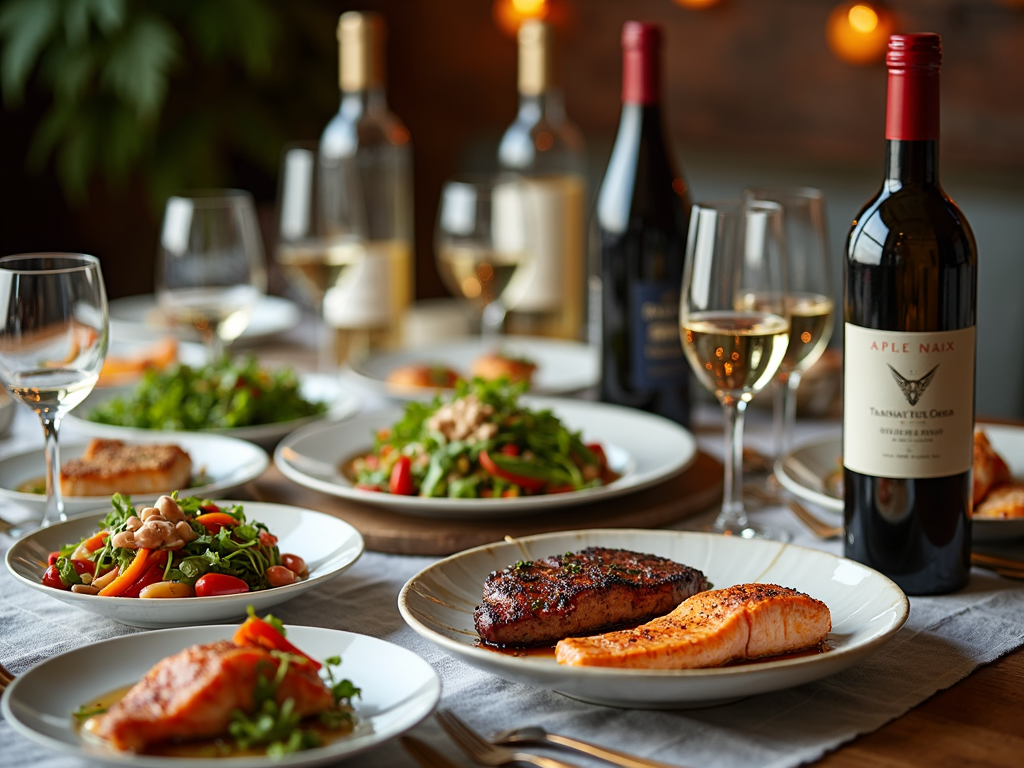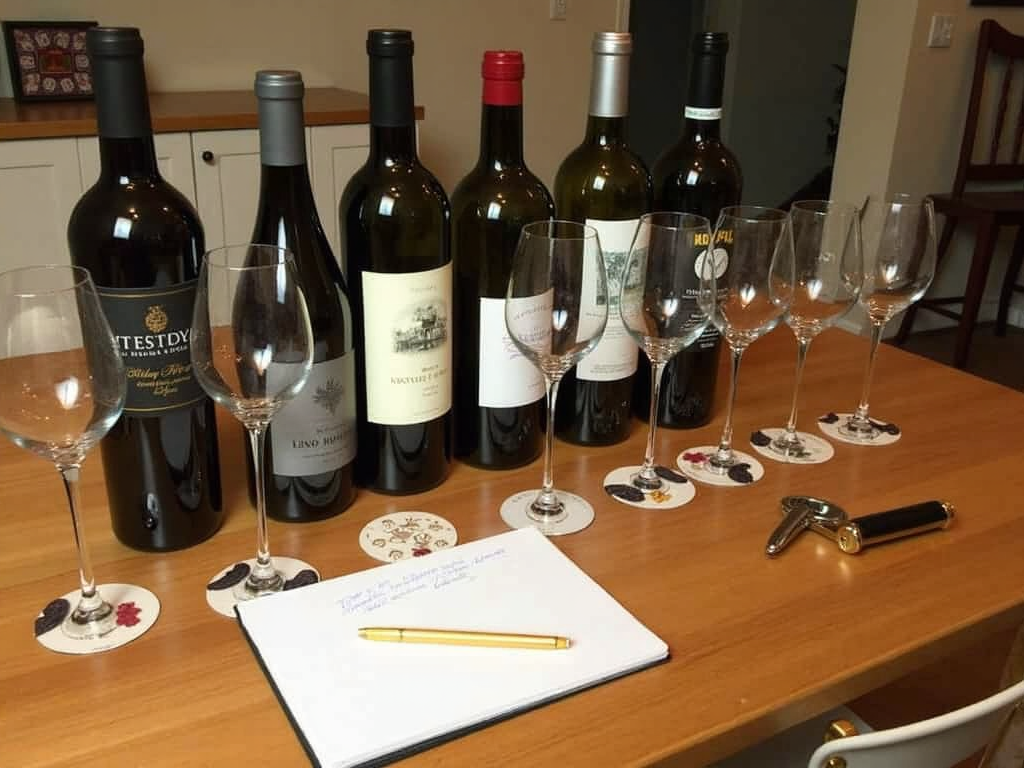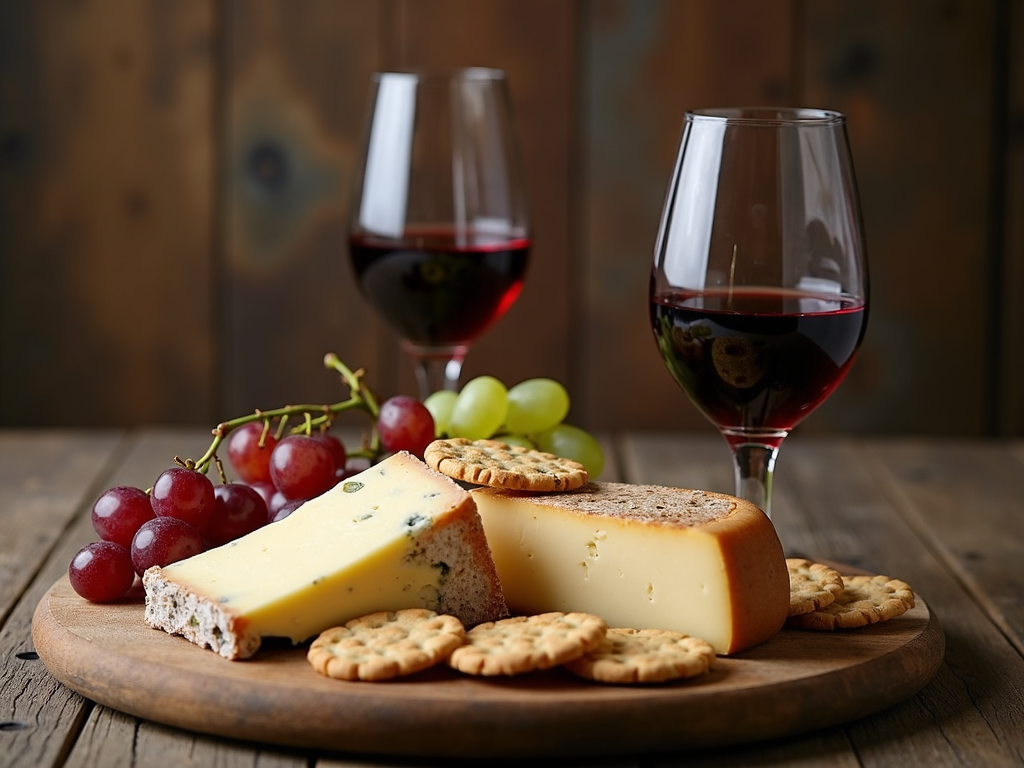The Art of Wine Pairing: A Beginner’s Guide
Wine pairing can seem intimidating, but it doesn’t have to be. This guide introduces you to the basics of matching wines with food, helping you elevate your meals and impress your guests.
What is Wine Pairing?
Have you ever noticed how some wines taste better with certain foods? That’s the art of wine pairing. It’s about finding the right wine to go with your dish so both taste even better. You don’t need to be an expert—anyone can learn the basics and enjoy tastier meals.
Basic Rules to Get You Started
A simple rule you might hear is to pair red wines with red meats and white wines with fish or chicken. It works because red wine’s tannins match the richness of beef, while white wine’s acidity balances lighter dishes like fish. But this is just the beginning—pairing gets more interesting from here.
Exploring Different Wine Varietals
Knowing your wines makes pairing easier. Take a bold Cabernet Sauvignon from Jackson Family Wines—it’s great with a juicy steak. Or try a crisp Sauvignon Blanc with a fresh salad. Exploring varietals is a big part of mastering wine pairing, and it’s fun to learn what works.
Here are some popular varietals and what they’re like:
- Cabernet Sauvignon: Full-bodied with dark fruit flavors like blackcurrant. Perfect for steak or lamb.
- Pinot Noir: Lighter, with red berry and earthy tastes. Pairs well with salmon or duck.
- Chardonnay: Medium to full-bodied, often buttery. Goes with chicken or creamy pasta.
- Sauvignon Blanc: Light and crisp with citrus notes. Matches fish or salads.
- Riesling: Ranges from dry to sweet, great with spicy food or Asian dishes.
Here’s a quick look at some pairings:
| Wine Type | Food Pairing |
|---|---|
| Cabernet Sauvignon | Steak, lamb |
| Pinot Noir | Salmon, duck |
| Chardonnay | Chicken, creamy pasta |
| Sauvignon Blanc | Fish, salads |
| Riesling | Spicy dishes, Asian cuisine |

Tips for Choosing the Right Wine
I’ve learned that experimenting is the best way to get good at wine pairing. Try different mixes and see what you enjoy. Once, I paired a light Pinot Grigio with a spicy Thai curry—it was unexpected but amazing.
Pairing is personal. What tastes good to you might not work for someone else. The goal is to love what you’re eating and drinking. If a wine and dish make you happy together, that’s a win.
Check the wine label for hints. Words like ‘oaky’ or ‘fruity’ tell you what to expect. At a restaurant, ask the server for suggestions—they often know what fits the menu. For more ideas, look at Jackson Family Wines wine reviews for tasting notes and pairing tips.
Experimenting with Pairings
Want to try it yourself? Set up a small tasting at home. Pick a few wines and make simple snacks to go with them. Write down what you think—it’s a great way to learn.
Some tips to keep in mind:
Do: - Match the wine’s strength to the dish - Think about sauces, not just the main food - Trust your taste
Don’t: - Use a strong wine with a light dish - Mix heavy red wines with spicy food—it can get too intense - Worry about asking for help

Pairing Wine with Dessert and Cheese
Wine isn’t just for dinner. It can make desserts and cheese even better. A sweet Riesling goes nicely with a fruit tart, while a rich Port matches chocolate perfectly.
For cheese, try a bubbly wine with soft Brie or a bold red with sharp cheddar. The mix of flavors and textures is so satisfying. It’s an easy way to end a meal on a high note.
Learning from Wine Brands
Brands like Jackson Family Wines offer tons of options for pairing. Their range covers everything from light whites to hearty reds. Checking out different wine brands can inspire you to try new combinations.

Conclusion
Wine pairing is an art you can learn with practice. Get to know wine varietals, think about how food and wine work together, and trust what you like. It’s all about making your meals more enjoyable.
Julia Child said it best: ‘Wine is meant to be with food—that’s the point of it.’ So grab a bottle, pick a dish, and start exploring. The Art of Wine Pairing: A Beginner’s Guide is your first step to tasty discoveries.